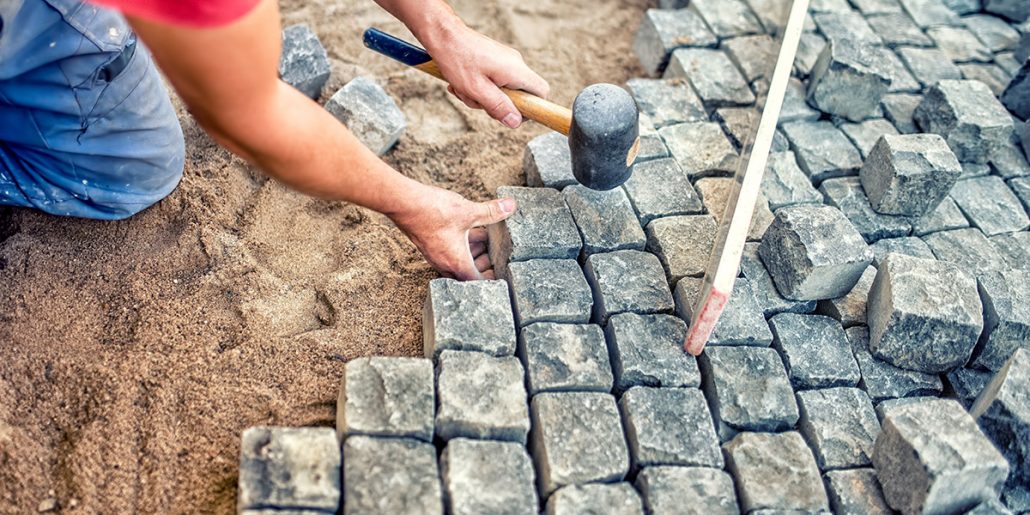Opening the Secrets of Sustainable Stonework Construction Practices for Eco-Friendly Buildings
In the realm of modern building and construction, the quest of sustainable techniques has actually become extremely important. Amongst the myriad methods to environment-friendly building, lasting masonry building and construction stands out as a time-tested and resilient method that holds a wealth of untapped potential. From the option of materials to ingenious building strategies, the tricks to attaining sustainability within stonework building and construction are complex and interesting. By checking out the benefits, materials, techniques, and future patterns of sustainable masonry, a deeper understanding of how these techniques can form the future of eco-friendly structures emerges.
Benefits of Sustainable Stonework Building
Welcoming sustainable masonry construction practices not just lowers ecological effect but additionally uses long-term financial advantages to home builders and areas. By utilizing products like recycled bricks, blocks, and rocks, building contractors can substantially lower the carbon impact of their projects while advertising source effectiveness. In addition, lasting masonry building techniques, such as appropriate insulation and thermal mass residential properties, can improve power effectiveness within buildings, bring about decreased functional costs gradually.
Furthermore, the durability and resilience of masonry frameworks add to lasting financial benefits. Buildings created making use of sustainable masonry methods frequently need less maintenance and repair, translating to cost savings for building contractors and residential or commercial property owners. The durability of stonework materials additionally ensures that frameworks remain secure and protected, lowering the need for regular renovations or substitutes.
Eco-Friendly Stonework Materials
Using environmentally friendly stonework products is a critical step in the direction of improving the sustainability of construction methods and minimizing environmental impact while taking full advantage of long-lasting economic benefits. Lasting stonework products are sourced, produced, and made use of in a fashion that decreases overall ecological effect. Products such as recycled bricks, reclaimed rock, and sustainable cinder block are coming to be significantly prominent options for eco-conscious contractors. Recycled blocks, for instance, not just divert waste from land fills however also require less power to produce compared to new bricks. Reclaimed rock offers a special visual allure while decreasing the requirement for new quarrying. Sustainable concrete blocks integrate recycled aggregates and may feature enhanced insulation buildings, adding to power effectiveness in structures.
Furthermore, natural products like adobe, rammed planet, and straw bales provide excellent thermal mass properties, reducing the need for home heating and cooling down energy. These materials are often locally available, advertising regional economic climates and lowering transportation-related carbon exhausts. By choosing eco-friendly masonry products, building and construction tasks can dramatically reduce their environmental impact and add to the production of healthier, a lot more sustainable constructed environments.
Energy-Efficient Stonework Strategies
Energy efficiency plays an essential function in enhancing the sustainability of stonework building practices. By applying energy-efficient stonework methods, contractors can significantly minimize the general energy usage of a structure, leading to reduced operational prices and a smaller sized environmental footprint. One key energy-efficient masonry method is the usage of thermal mass, which includes incorporating dense products like concrete or block into the building's framework to take in and keep warm. This aids regulate interior temperature levels, reducing the demand for mechanical heating and cooling down systems.

Technologies in Sustainable Stonework
Current innovations in sustainable stonework practices have brought around ingenious methods that are reshaping the building official site sector. One such technology is the development of self-healing concrete, which utilizes microorganisms embedded within the concrete to recover cracks autonomously. This advancement not only minimizes upkeep costs but additionally improves the durability of masonry frameworks, contributing to their sustainability.
Another noteworthy advancement is using recycled aggregates in stonework construction - masonry contractor. By including products such as smashed ceramic waste or recycled glass into concrete blends, home builders can reduce the ecological impact of construction tasks while keeping architectural honesty. This technique not only diverts waste from garbage dumps but also saves all-natural sources, making it a key innovation in sustainable masonry building
In addition, the combination of electronic design devices, such as Building Details Modeling (BIM), is transforming the method masonry frameworks are intended and constructed. BIM allows for even more accurate computations, reduced material waste, and boosted power effectiveness, eventually leading to even official site more lasting building methods. These developments jointly represent an appealing future for sustainable stonework building and construction in the era of environment-friendly buildings.
Future Trends in Masonry Sustainability
With the innovative strides made in lasting stonework methods, the future trends in stonework sustainability are poised to additional transform the building and construction industry. One of the essential fads forming the future of masonry sustainability is the enhanced combination of technology. Developments such as Building Information Modeling (BIM) and digital truth simulations are being utilized to enhance stonework construction processes, leading to minimized material waste and improved power effectiveness in structures.
Moreover, the advancement of unique sustainable products is established to play a significant duty in enhancing the eco-friendliness of stonework construction. masonry contractor. Technologies like self-healing concrete, recycled accumulations, and bio-based binders are gaining grip for their capability to minimize environmental influence while preserving structural stability

Final Thought
To conclude, sustainable masonry building techniques provide many benefits for environmentally friendly buildings. By utilizing green materials and energy-efficient techniques, masonry check these guys out can add to a much more sustainable built environment. Advancements in sustainable stonework are constantly being established to even more improve the ecological efficiency of buildings. Looking in the direction of the future, the fad of masonry sustainability is anticipated to expand, causing even more eco-friendly and energy-efficient construction practices in the years to come.